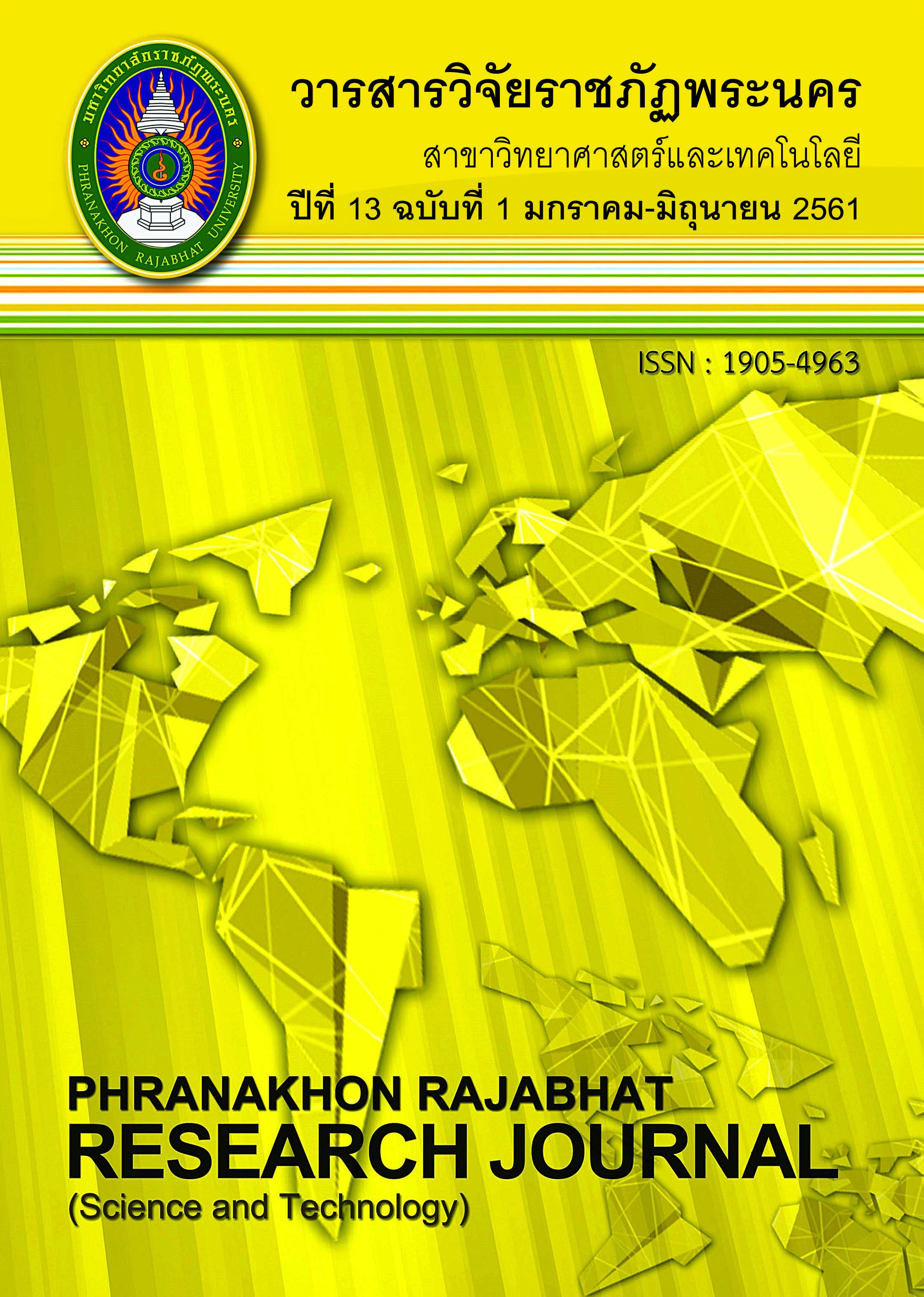การวางแผนส่วนประกอบอาหารสำหรับเป็ดไข่โดยใช้ตัวแบบทางคณิตศาสตร์
Keywords:
Laying duck feed formula, Mathematical model, Nutrition requirementAbstract
The objective of the research is to formulate a low-cost diet formulation for the laying duck based on the mathematical model and fnd the best solution using Solver add-ins in Microsoft Excel 2013. The linear programming model is applied in this research to calculate the feed formulation for the laying duck. The objective function of the mathematical model is to minimize the total cost of the mixture feed under nutrient
requirements for the laying duck in the different periods of time: 9-20 weeks, 24-48 weeks, and 48-72 weeks determined by the bureau of animal nutrition development. The linear programming model can be written: The results of the study show that the feed formula for the laying duck of 9 to 20 weeks of age contains 5 raw ingredients: 0.459 kg of tapioca line, 0.154 kg with soybean meal, 0.278 kg of sunflower meal, 0.011 kg of shells meal, and 0.024 kg with bone meal. The cost equals to 8.486 baht per kilogram. The feed formula for the laying duck of 24 to 48 weeks of age contains 4 raw ingredients: 0.326 kg of tapioca line, 0.675 kg of sunflower meal, 0.049 kg of shells meal, and 0.023 kg with bone meal. The cost equals to 8.598 baht per kilogram. The feed formula for the laying duck of 48 to 72 weeks of age contains 6 raw ingredients: 0.533 kg of tapioca line, 0.065 kg of soybean meal, 0.022 kg of cassava leaves meal, 0.297 kg of sunflower meal, 0.037 kg of shells meal, and 0.024 kg with bone meal. The cost equals to 7.645 baht per kilogram. The costs of three feed formulations are cheaper than the ready-make-food costs by 40.79% 46.82%, and 50.67% respectively.
References
Bureau of Animal Nutrition Development (2017). Raw foods. Retrived September 8, 2017, from https://nutrition.dld.go.th/Nutrition_Knowlage/index_nutrition.htm. (in Thai)
Naksakul, O. (2017). Manufacturing and managing animal food to reduce product costs. Retrieved September 8, 2017, from https://ag-ebook.lib.ku.ac.th/ ebooks/2011/2011-013-0065/index.html.
(in Thai)
Nath, T. and Talukdar, A. (2014). Linear programming technique in fsh feed formulation. International Journal of Engineering Trends and Technology (IJETT), 17(3), 132-135.
Lonescu, A. (2013). Microsoft Offce Excel 2010: Operational research in excel 2010. International Journal of Computer and Information Technology, 2(5), 1026-579.
Raingthaisong, B. and Sukmok, J. (2010). Swine feed ingredient by linear programming model. Operations Research Network Conference 2010 (OR-Net 2010), Bangkok. (In Thai)
Sirirak, S. and Burintrapiban, N. (2014). Duck egg production and marketing in Songkhla province. Retrieved March 28, 2018, from https://pvlo-sgk.dld.go.th/th/images/ stories/reseach57/dug57.pdf. (in Thai)
Sobut, Y., Kanjanapruthipong, J. and Sookmanee, N. (2010). The calculation program for feeding dairy cows in humid climates. The 3rd National Conference on Information Technology (NCIT 2010), Bangkok. (in Thai)
Winston, W.L. and Venkataramanan, M. 2002. Introduction to mathematical programming: applications and algorithms, 4th ed., Duxbury Press.
Zioganas, C. (1983). Least – cost feed rations for sheep by linear programming. Journal of
economics and business, 33, 58-68.
Downloads
Published
Issue
Section
License
โปรดกรอกเอกสารและลงนาม "หนังสือรับรองให้ตีพิมพ์บทความในวารสารวิจัยมหาวิทยาลัยราชภัฏพระนคร สาขาวิทยาศาสตร์และเทคโนโลยี" ก่อนการตีพิมพ์




